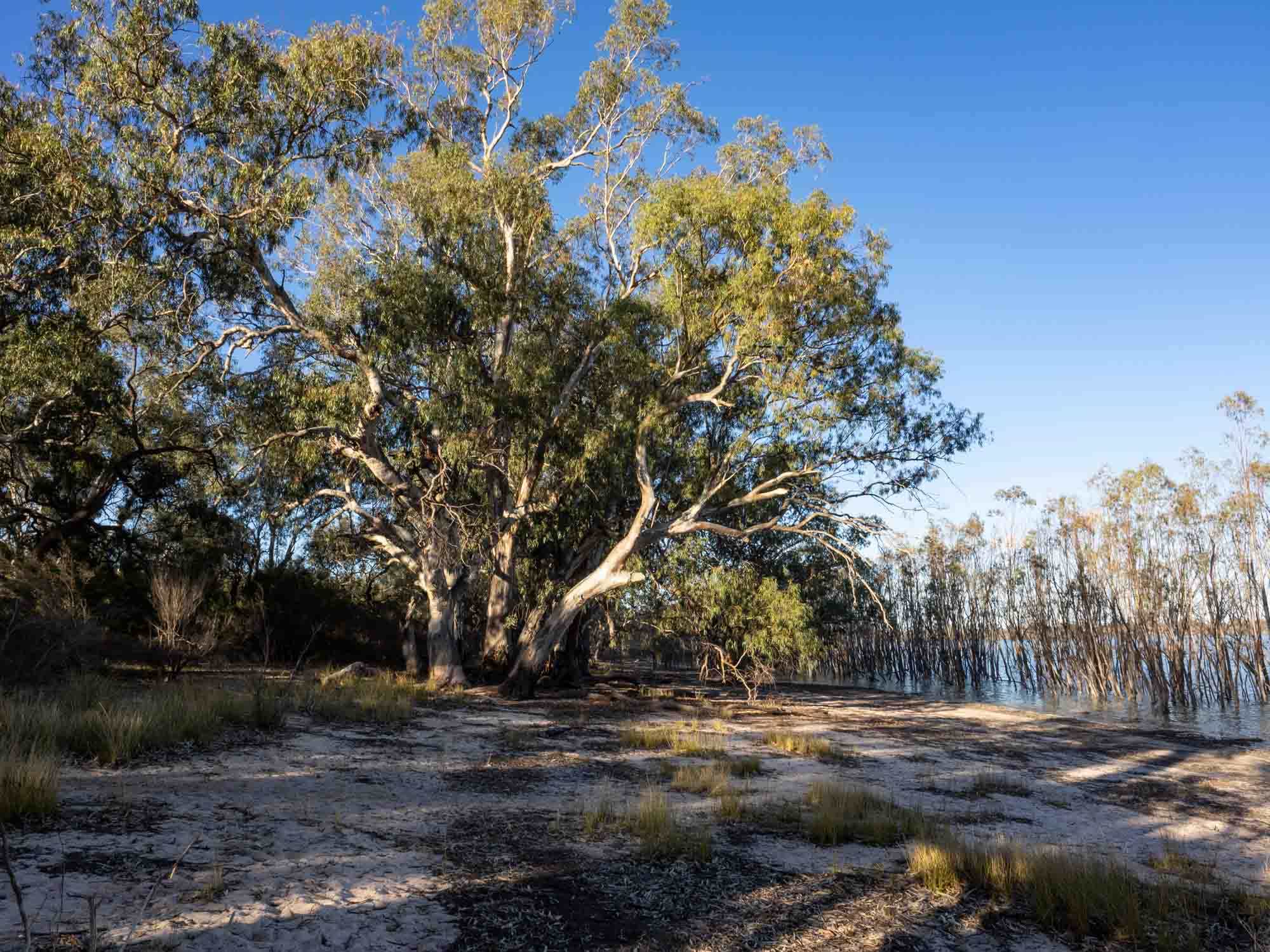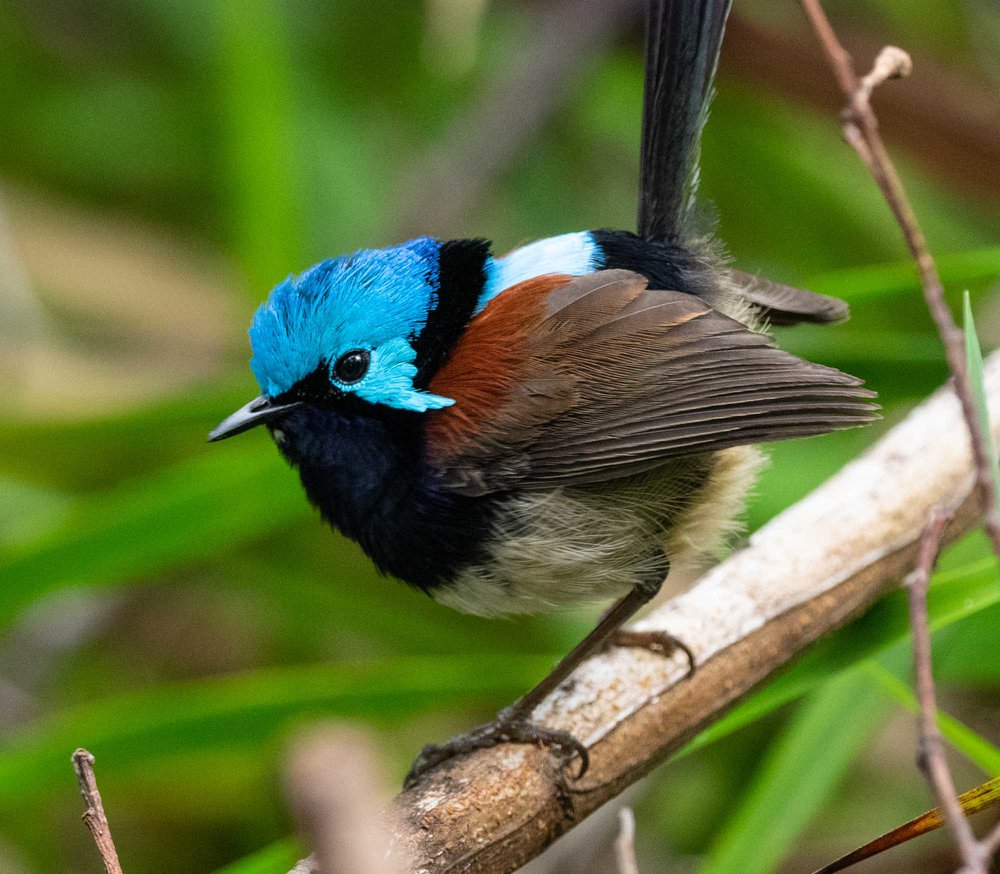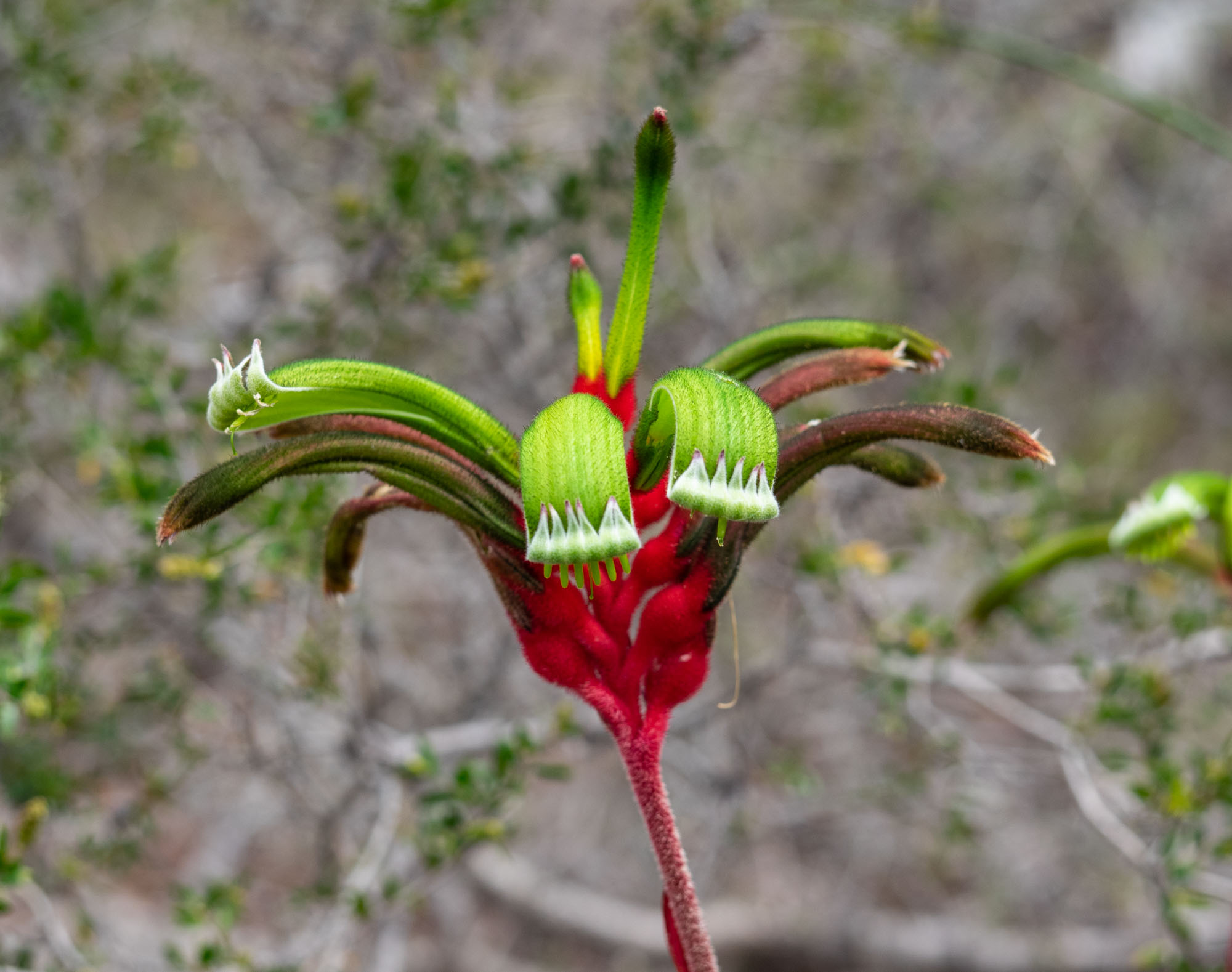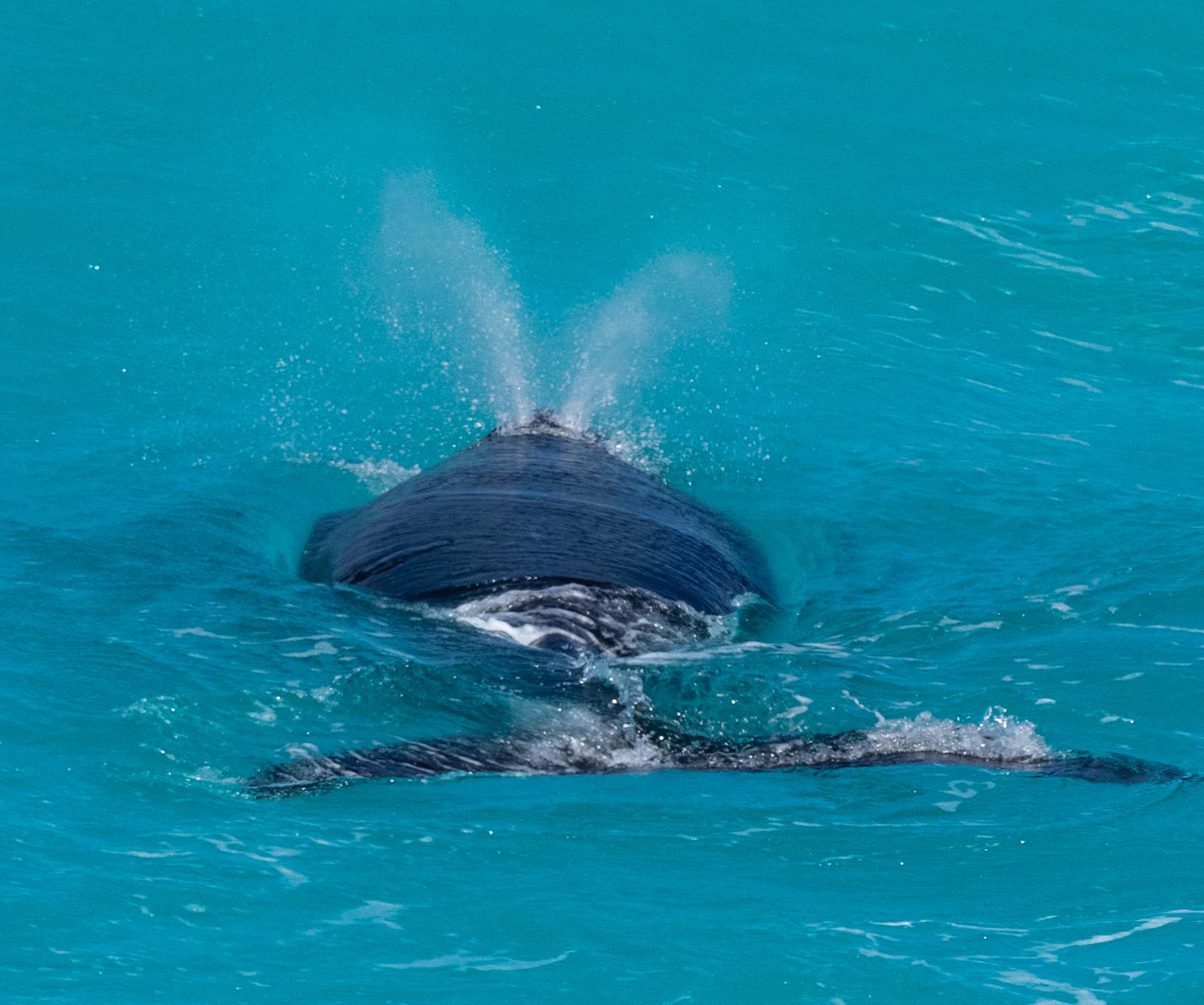Hattah-Kulkyne: contrasting environments in the mallee

The border between one type of environment and another can be very sharp. A body of water in a dry, arid environment can sustain an ecosystem on its fringes which is in sharp contrast to that just metres away.
This is the first of a series of posts describing our experiences on a two month trip to Western Australia. We left our south-eastern forest a week ago and are heading towards the south-western forests of WA. The environments we’ll encounter along the way will often be very different to either of those places at opposite sides of the continent.
Our first nature stop was on the shores of Lake Mournpall in Hattah-Kulkyne National Park. This park is in the mallee country of north-western Victoria. We have come to love the mallee. Over the last few years, we’ve visited a number of national parks and reserves in western Victoria and eastern South Australia that feature this special habitat.
Lake Mournpall at dawn
Lake Mournpall is one of a series of shallow, freshwater lakes in the park, which are filled by streams that connect to the Murray River. While their levels fluctuate with the seasons, they are topped up and can greatly expand when the Murray floods.
Waterbirds
The lakes are home to large numbers of water birds. We sighted the following species on Lake Mournpall and nearby Lake Hattah: Wood Duck, Black Swan, Australian Shelduck, Black-tailed Native Hen, Black-fronted Dotterel, Grey Teal, Darter, Hoary-headed Grebe, Coot and Pelican. The big flocks of Red-necked Avocets and White-headed Stilts, which we saw on a visit to Lake Hattah in mid August 2013, were absent.
Shoreline life
Lake Mournpall is ringed by tall River Red Gums (Eucalyptus camaldulensis), as well as a number of smaller trees, including other eucalypt species, Broom Ballart (Exocarpus sparteus) and casuarinas.
River Red Gum buds
A band of what I assume are River Red Gum saplings lies just offshore. The orange marks on the trunks of this group shows how high the lake can rise when the Murray floods.
These trees provide nesting, roosting and feeding sites for a variety of bird species. We sighted Pied and Grey Butcherbird, Blue-faced Honeyeater, Yellow Rosella, Little Corella, Sulphur-crested Cockatoo, Mallee Ringneck, Regent Parrot, Blue-faced Honeyeater, Whistling Kite, Major Mitchell’s Cockatoo, Common Bronzewing, Kookaburra, Magpie-Lark and White-winged Chough.
The most common species seen around the lake is the Noisy Miner. These aggressive birds descend on any other bird that comes close to the shoreline and drive it away in short order. The lakeside must be vital habitat to those birds that keep coming back to it - given the incessant mobbing by the miners.
At night we heard Southern Boobook and Tawny Frogmouths calling in nearby trees and managed to get some shots of a Frogmouth.
Insect life around the lake appeared pretty quiet. The swarms of bush flies, which usually welcome visitors to this part of the world, were conspicuous by their absence.
However, we did find a few nice arthropods on the shoreline, shown in the images below. Some of these were clearly gearing up for an early Spring reproductive rush.
A mating pair of pyrgomorph grasshoppers (Monistria sp.) - a pretty extreme case of sexual dimorphism!
The mallee environment
Just a short distance from the shore of the lake, the habitat changes dramatically. The tall River Red Gums are gone, replaced by typical mallee vegetation - Scrub cypress pine (Callitris verrucosa), low-growing eucalypts, wattle bushes, casuarinas and clumps of Porcupine Grass (Triodia scariosa). Stunning!
We encountered several Emu on the track behind the Lake Mournpall campsite.
However we dipped on their namesakes, the Mallee Emu Wren. OK, the Mallee Emu Wren is smaller than the Emu. But the real problem is that it is exceedingly elusive, diving down to the base of a Triodia clump when it sights you - which is usually well before you sight it!
Nonetheless, we did encounter a few other nice small birds on this mallee track - the Splendid Fairy Wren, the Red-capped Robin and the Weebill.
There were few honeyeaters to be seen - just the occasional Singing and Spiny-cheeked Honeyeater. This may have been because spring flowering had only just started.
We may return to Hattah-Kulkyne on the way home when Spring is at its peak. Who knows? - we may find the Mallee Emu Wren then!
Shingleback or ‘Sleepy’ Lizard - this subspecies (Tiliqua rugosa aspera) is found from the Nullarbor Plain to eastern QLD … but there’s another, more colourful subspecies we hope to see in WA’s south west!












































